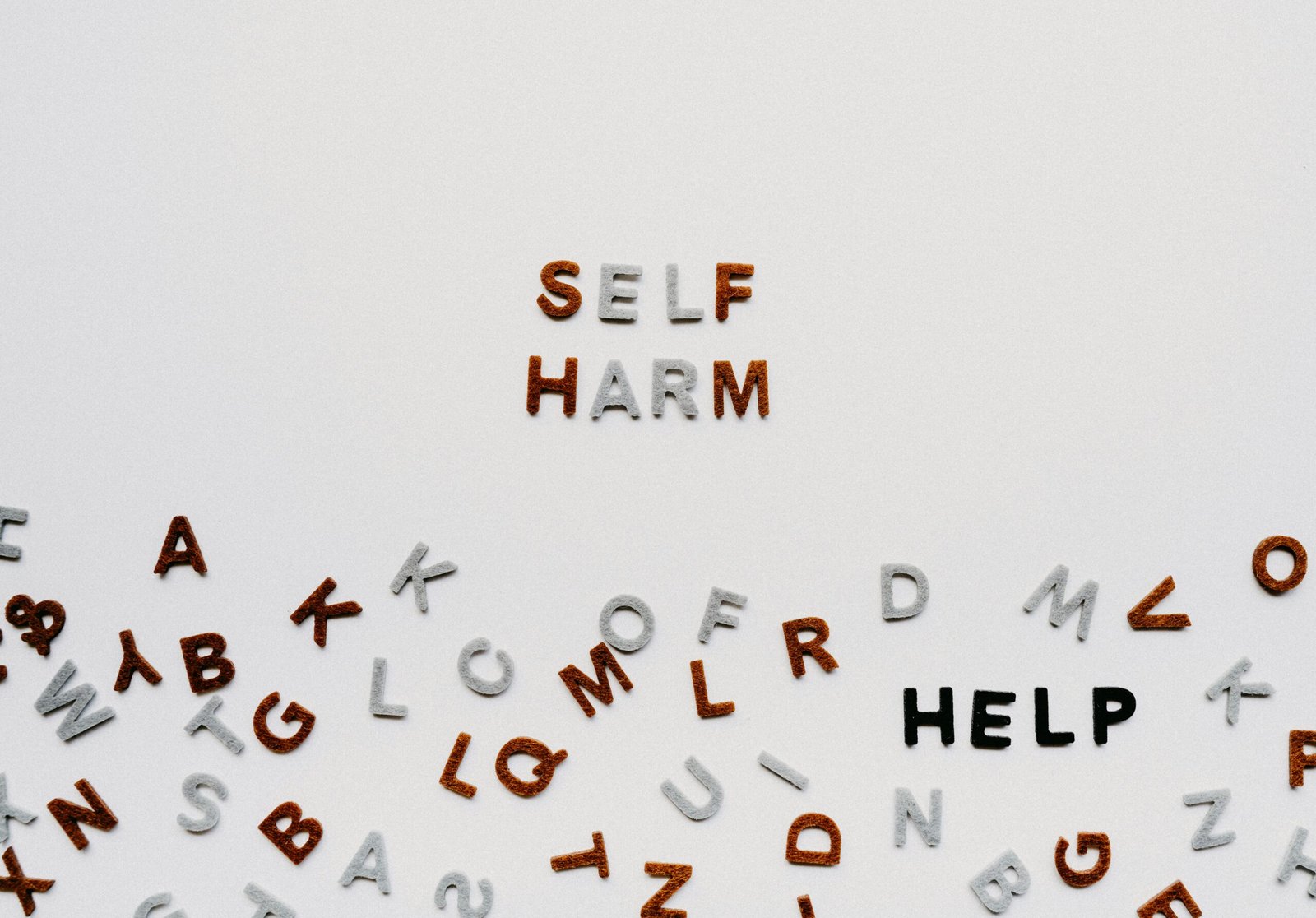Support for Self-Harm Urges: Healthier Coping Strategies
If you self-harm, these strategies may help reduce the urge or offer safer ways to address the emotions behind it. Support is available. You’re not alone.
Why People Self-Harm
When painful or difficult emotions overwhelm you, self-harm may seem like a way to:
- Regain a sense of control
- Feel something when you’re otherwise numb
- Express or distract from unwanted emotions
- Punish yourself
However, self-harm carries serious risks:
- You may accidentally injure yourself severely and require urgent medical care.
- It often leads to guilt, embarrassment, or helplessness.
- It doesn’t resolve emotional pain and can delay getting effective support.
Even when you know self-harm isn’t a healthy coping method, it can be hard to stop in moments of distress. But there are healthier ways to cope — both for immediate relief and for long-term healing.
⸻⸻⸻⸻⸻⸻⸻⸻⸻⸻⸻⸻⸻⸻⸻⸻⸻⸻⸻⸻
Step 1: Identify the Emotion and the Purpose Behind It
Before acting on the urge, try asking: “Why do I want to hurt myself?”
Once you understand the underlying emotion, you can try an alternative that meets that same need:
- Anger? Try physical outlets like air punches or jumping jacks.
- Lonely or ignored? Message a friend, call a loved one, or say hi to someone nearby.
- Numb? Try something that brings pleasant sensations like:
- A warm bath/shower
- Eating a favorite food
- Being outside in nature
- Getting a massage
⸻⸻⸻⸻⸻⸻⸻⸻⸻⸻⸻⸻⸻⸻⸻⸻⸻⸻⸻⸻
Step 2: Change Your Environment
Even small environmental shifts can help reduce urges:
•Sit by an open window to feel fresh air
•Step outside your door or sit on the porch
•Walk around the block or explore a nearby park
Bonus: Nature and movement both release “feel-good” chemicals and help distract from distress.
⸻⸻⸻⸻⸻⸻⸻⸻⸻⸻⸻⸻⸻⸻⸻⸻⸻⸻⸻⸻
Step 3: Move Your Body
Physical activity doesn’t need to be intense. Try:
- Dancing or yoga routines from YouTube
- Stretching while listening to music or a podcast
- Walking a dog or taking a stroll with a friend
- Doing light bodyweight exercises (e.g. 1-minute half squats)
Even gentle movement can lift your mood.
⸻⸻⸻⸻⸻⸻⸻⸻⸻⸻⸻⸻⸻⸻⸻⸻⸻⸻⸻⸻
Step 4: Be Around People
Being around others — even in public places — can ease loneliness:
- Grab a coffee or snack and sit in a park
- Visit a bookstore, museum, or library
- Invite a friend over to watch a movie
- Write or draw while surrounded by background noise in a café or mall
⸻⸻⸻⸻⸻⸻⸻⸻⸻⸻⸻⸻⸻⸻⸻⸻⸻⸻⸻⸻
Step 5: Talk to Someone You Trust
It’s okay to open up. You don’t need to give every detail. Try saying:
- “I feel like hurting myself, but I don’t want to. Can you stay with me for a while?”
- “I’m overwhelmed and trying to cope. Can we hang out or talk for a bit?”
- “I could really use some loving company right now. Do you have time to meet?”
- Trusted people could include a friend, therapist, mentor, or relative.
⸻⸻⸻⸻⸻⸻⸻⸻⸻⸻⸻⸻⸻⸻⸻⸻⸻⸻⸻⸻
Step 6: Listen to Music or Spoken Word
Music can distract, uplift, and help you process emotions:
- Try upbeat or energizing playlists
- Classical, lo-fi, or nature sounds can soothe
- Audiobooks or podcasts offer spoken distraction
- Avoid music that deepens sadness unless it helps you process intentionally
⸻⸻⸻⸻⸻⸻⸻⸻⸻⸻⸻⸻⸻⸻⸻⸻⸻⸻⸻⸻
Step 7: Try Guided Imagery
Visualizing calming scenes can help override distress. Here’s how:
- Sit or lie down, close your eyes, and breathe deeply.
- Picture a peaceful place (real or imagined).
- Add sensory details — sounds, smells, colors, sensations.
- Explore that space mentally and breathe slowly.
- Inhale peace, exhale distress. Remind yourself you can revisit this place anytime.
⸻⸻⸻⸻⸻⸻⸻⸻⸻⸻⸻⸻⸻⸻⸻⸻⸻⸻⸻⸻
Step 8: Express Yourself Creatively
When words are too much, creativity can help:
- Draw, paint, sculpt, or doodle
- Create symbols or scenes that represent your emotions
- Decorate or rearrange your space
- Modify clothing (paint, add patches, etc.)
Bonus: Creative flow states help block out pain and increase focus, satisfaction, and calm.
⸻⸻⸻⸻⸻⸻⸻⸻⸻⸻⸻⸻⸻⸻⸻⸻⸻⸻⸻⸻
Step 9: Try Harm Minimization Techniques
These short-term strategies can help reduce harm:
- Snap a rubber band on your wrist
- Hold ice cubes
- Draw red lines on your skin instead of cutting
- Pinch yourself lightly
- Eat spicy or sour candy
- Squeeze a stress ball or scream into a pillow
- Punch a cushion (not yourself)
If you’re still self-harming:
- Use sterile tools
- Keep someone nearby you trust
- Reduce intensity (e.g., scratching instead of cutting)
- Clean and treat wounds right away
These methods are not long-term solutions, but may reduce risks as you work toward stopping completely.
⸻⸻⸻⸻⸻⸻⸻⸻⸻⸻⸻⸻⸻⸻⸻⸻⸻⸻⸻⸻
Final Thoughts
While coping strategies can reduce the urge to self-harm, they don’t address the root emotional pain.
That’s why working with a trained therapist is essential.
Therapy can help you:
- Understand and process your emotions
- Explore triggers and patterns
- Build new, healthy coping mechanisms
- Heal in the long term
Source:
Raypole, C. (2024, December 6). Coping strategies when you feel like Self-Harming. Healthline. https://www.healthline.com/health/mental-health/self-harm-alternatives#takeaway

